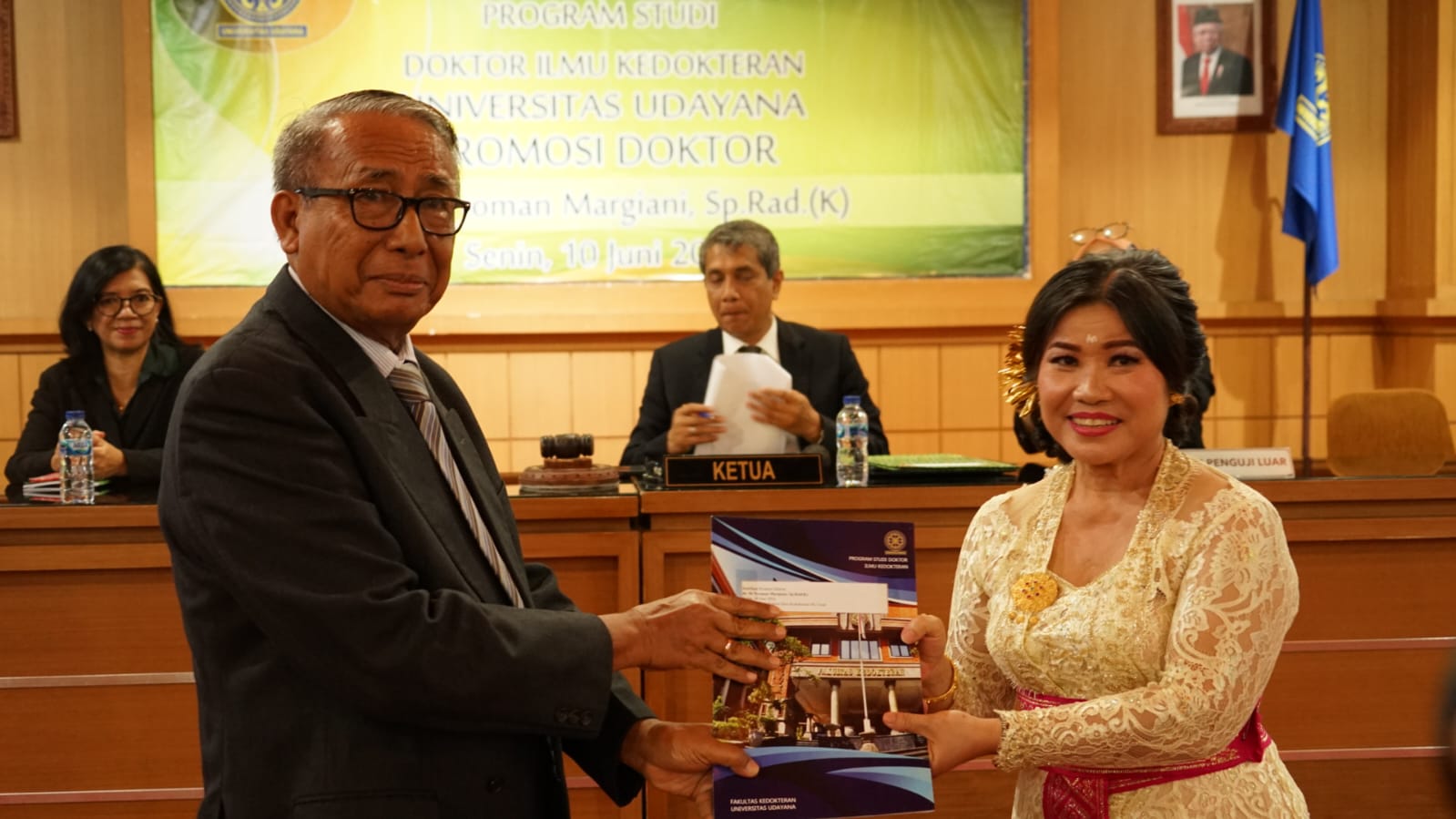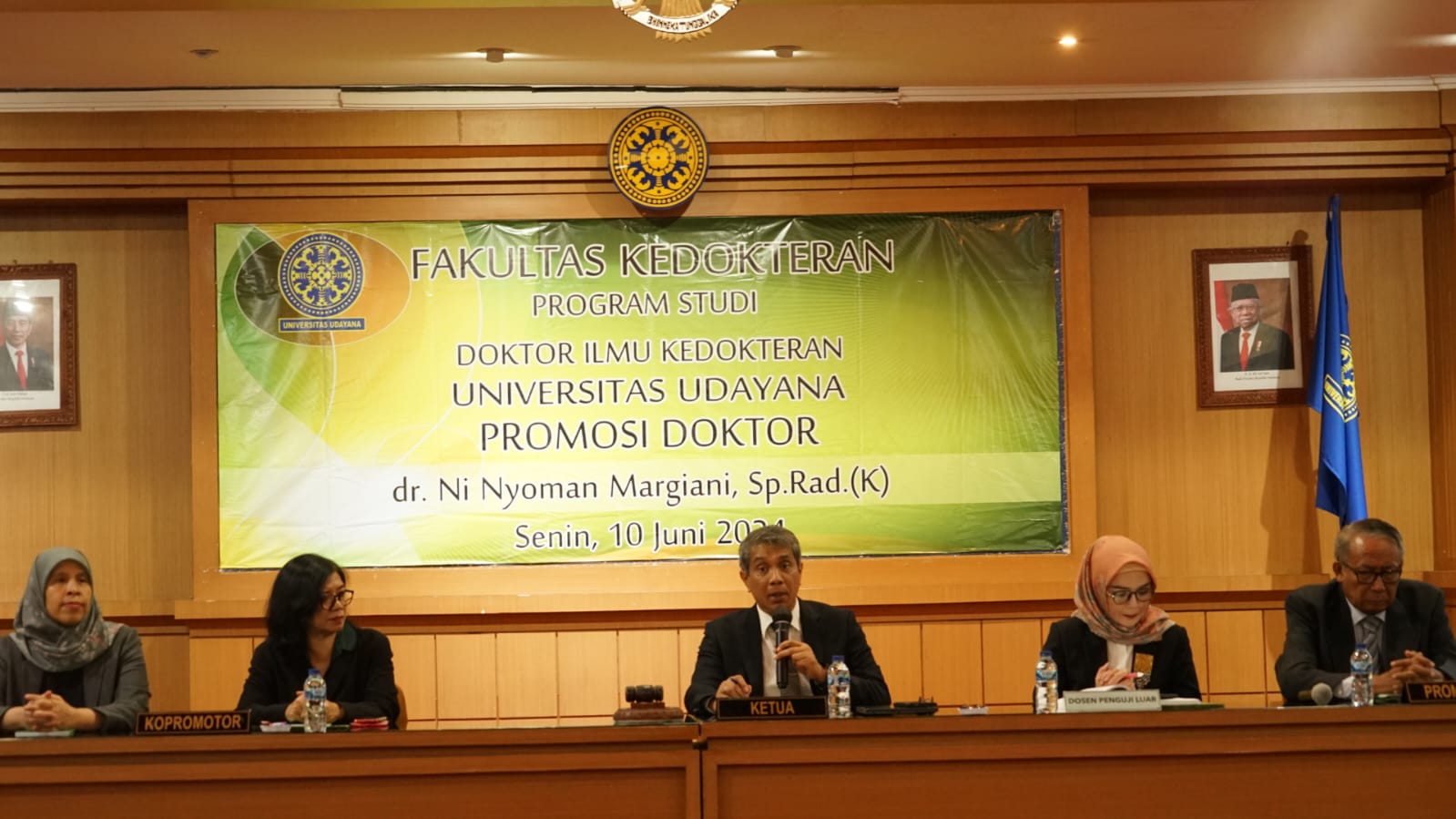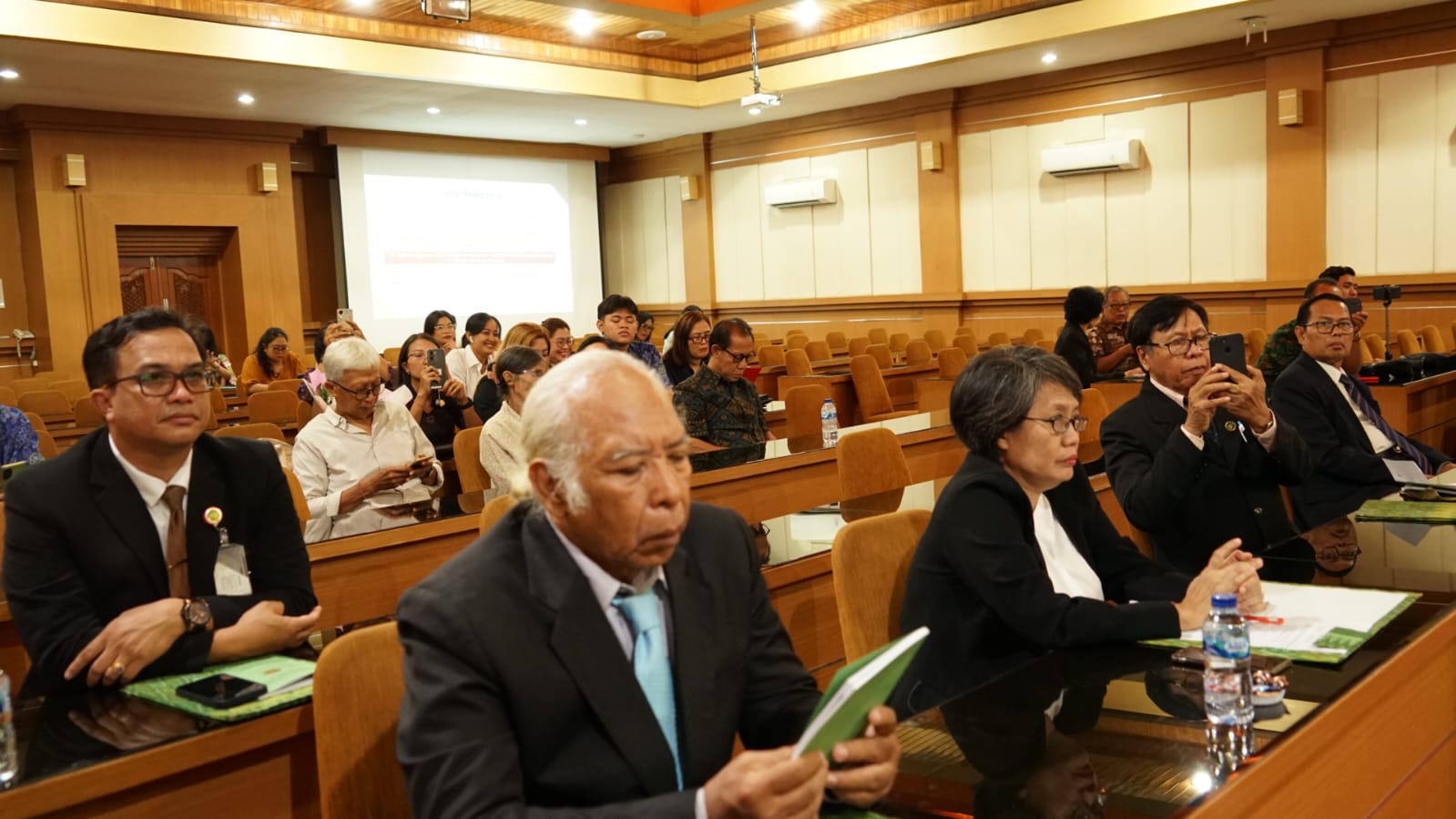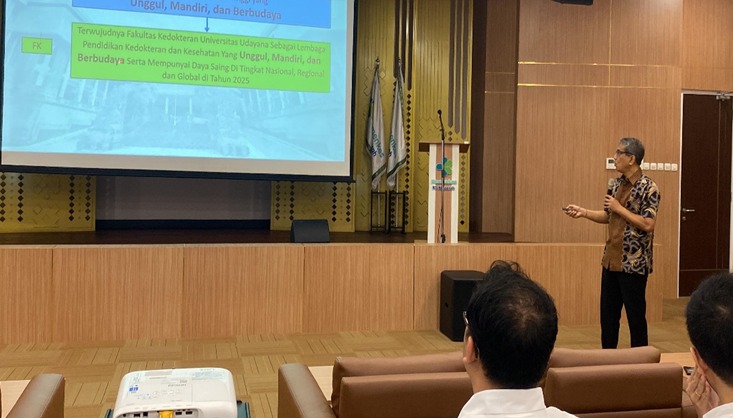New Doctor of Medicine Reveals Risk Factors for Decreased Bone Density in Children with Lupus
New Doctor of Medicine Reveals Risk Factors for Decreased Bone Density in Children with Lupus
Located in the Hall, Fl. III Postgraduate Program Building, Denpasar Campus, the Doctoral Promotion exam took place with the promovenda candidate, dr. Ni Nyoman Margiani, Sp.Rad.(K) with the dissertation title "Expression of RANKL, OPG, RANKL/OPG Ratio and Cyclophosphamide Therapy as Risk Factors for Decreased Bone Density in Children with Systemic Lupus Erythematosus at RSUP Prof. dr. I.G.N.G Ngoerah Denpasar." (10/6/2024)
Systemic lupus erythematosus (SLE) is an autoimmune disease that often results in a decrease in bone density in the form of disruption of the bone remodeling process and an imbalance between osteoblast and osteoclast activity. This condition can be observed by looking at the expression of bone metabolism markers, namely RANKL, OPG and the RANKL/OPG ratio.
The mechanism of decreasing bone density in the SLE is also influenced by the administration of long-term immunosuppressant and immunomodilator therapy, one of which is cyclophosphamide. This study aims to examine the expression of RANKL, OPG and the RANKL/OPG ratio as well as cyclophosphamide therapy as risk factors for decreased bone density in children with SLE.
The nested case-control study was carried out at RSUP Prof. Dr.I.G.N.G Ngoerah from September 1, 2023 to February 1, 2024 in children with SLE who are receiving long-term therapy. The case group was children (aged < 19 years) with LES with reduced bone density and the control group was children with LES with normal bone density. A decrease in bone density is determined from the results of the BMD z-score examination using a Dual x-ray absorption (DXA) tool. Serum levels of RANKL, OPG and RANKL/OPG ratio were assessed using ELISA.
The basic characteristics of the sample in the form of age, gender, height, weight and body mass index were also assessed in this study. Significance was set at p< 0.05. The statistical tests used are univariate, bivariate and multivariate. Bivariate analysis was carried out by cross tabulation using the Chi-square test. The magnitude of the risk factors is displayed in the Odds ratio (OR) value along with the 95% confidence interval (95% CI).
The results showed that low OPG expression (< 5.06 mg/dl) was a risk factor for decreased bone density (OR=17; 95% confidence interval [CI]=1.85-156.27; p=0.003). RANKL expression was high (OR=0.40; IK95%=0.08-1.94; p=0.443), RANKL/OPG ratio was high (OR=0.63; IK95% 0.09-4.28; p=1.000), and administration of cyclophosphamide therapy (OR=2.50; IK95%=0.52-12.14; p=0.443) was not proven to be a risk factor for decreased bone density in children with SLE. Multivariate test results show that low OPG levels and underweight BMI are significant and independent risk factors for decreased bone density in SLE children.
This exam was led by the Dean of the Faculty of Medicine, Udayana University, Prof. Dr. Dr. Komang Januartha Putra Pinatih, M.Kes., with a team of examiners:
1. Prof. Dr. Dr. I Made Bakta, Sp.PD-KHOM (Promoter)
2.Dr. Dr. Urged Made Wihandani, M.Kes (Copromotor I)
3.Dr. Dr. Elysanti Dwi Martadiani, S.Ked., Sp.Rad(K) (Copromotor II)
4. Prof. Dr. Dr. I Made Jawi, M. Kes
5. Prof. Dr. Ir. Ida Bagus Putra Manuaba, M.Phil
6. Prof. Dr. Dr. Rosy Setiawati, Sp. Rad (K)
7. Prof. Dr. Ir. Nyoman Subuat, MP
8.Dr. Dr. I Gusti Ayu Trisna Windiani, Sp.A (K)
9.Dr. Dr. I Putu Eka Widyadharma, M.Sc., Sp.S(K)
Meanwhile, academic invitations are:
1.Dr. Dr. Anak Ayu Sri Wahyuni, Sp.KJ
2.Dr. Dr. Made Ratna Saraswati, Sp.PD, KEMD., FINASIM
3.Dr. Dr. Putu Anda Tusta Adiputra, Sp.B.Subsp.Onk(K)
4.Dr. Dr. I Nyoman Wande, S.Ked., Sp.PK
5.Dr. Dr. Anak Agung Sagung Sawitri, MPH
In this exam, Dr. dr. Ni Nyoman Margiani, Sp.Rad (K) was declared to have graduated as the 417th Doctoral Graduate of the Medical Science Doctoral Degree Study Program, Faculty of Medicine, Udayana University with Cumlaude predicate.







UDAYANA UNIVERSITY